I know a float variable takes up 4 bytes in memory. But I want to know how it is saved? For example, if I define a variable:
float b = 1.0;
And I print the address of b in debugger command line:

Then I watch the value of register in this address

I have learned that a float variable has 1 sign bit, 8 enponent bits and 23 mantissa bits. I have watched some different value but I haven't found the law. So I just want to know how a float is saved? What does the value of register mean?Which bit stands for enponent bit and which stands for mantissa bit? Is it saved as a form like A*10^B, and B is enponent and A is mantissa?
Thank you for your answer!